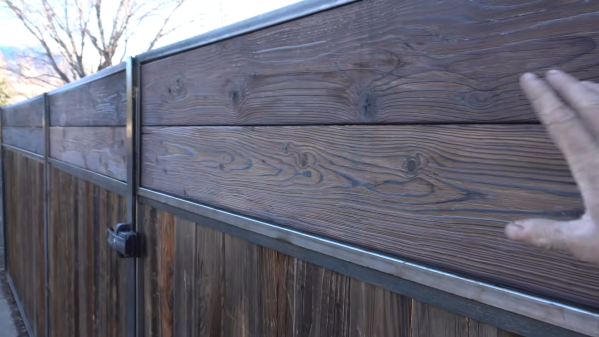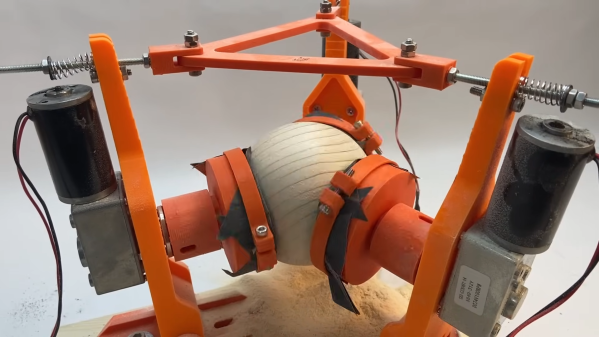Unless you move in architectural circles, you might never have heard of Yakisugi. But as a fence builder, [Lucas] over at Cranktown City sure has, with high-end clients requesting the traditional Japanese wood-finishing method, which requires the outer surface of the wood to be lightly charred. It’s a fantastic look, but it’s a pain to do manually. So, why not automate it?
Now, before we get into a whole thing here, [Lucas] himself notes that what he’s doing isn’t strictly Yakisugi. That would require the use of cypress wood, and charring only one side, neither of which would work for his fence clients. Rather, he’s using regular dimensional lumber which is probably Douglas fir. But the look he’s going for is close enough to traditional Yakisugi that the difference is academic.
To automate the process of burning the wood and subsequently brushing off the loose char, [Lucas] designed a double-barreled propane burner and placed it inside a roughly elliptical chamber big enough to pass a 2×8 — sorry, metric fans; we have no idea how you do dimensional lumber. The board rides through the chamber on a DIY conveyor track, with flame swirling around both sides of the board for an even char. After that, a pair of counter-rotating brushes abrade off the top layer of char, revealing a beautiful, dark finish with swirls of dark grain on a lighter background.
[Lucas] doesn’t mention how much wood he’s able to process with this setup, but it seems a lot easier than the manual equivalent, and likely yields better results. Either way, the results are fantastic, and we suspect once people see his work he’ll be getting more than enough jobs to justify the investment.
Continue reading “Automation Makes Traditional Japanese Wood Finishing Easier”

















